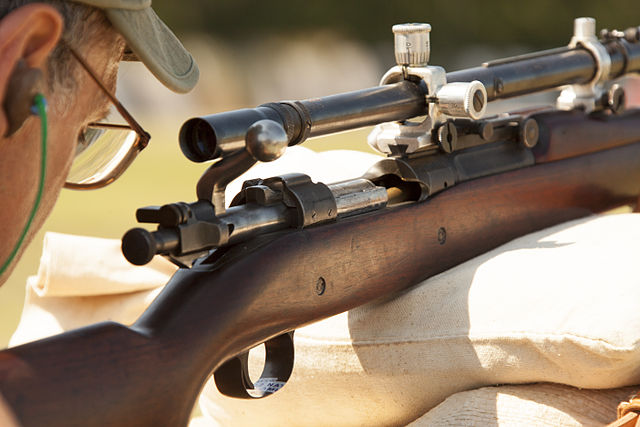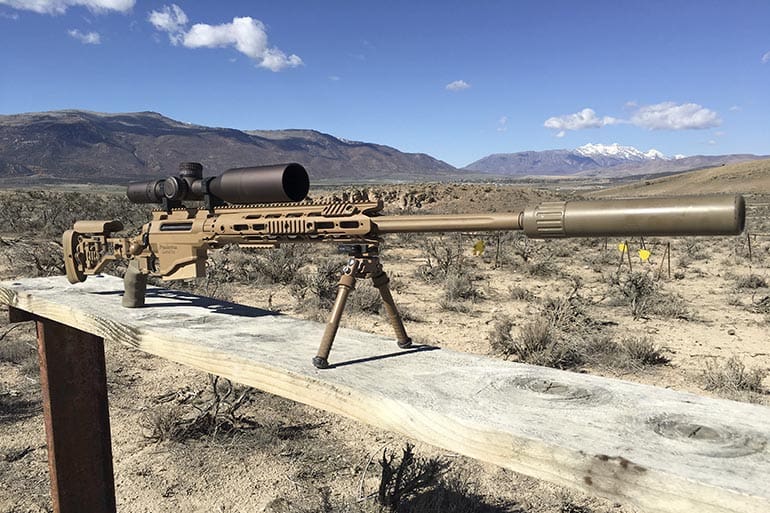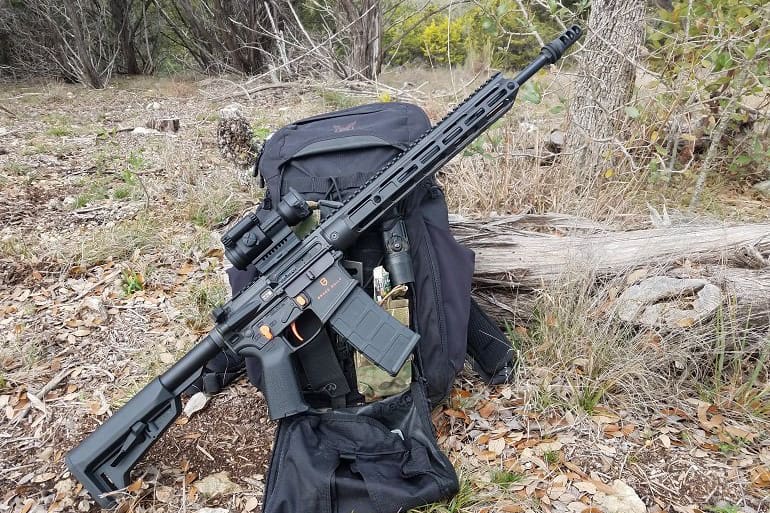For those new to rifles, you’ll probably hear about “long action” and “short action” rifles and you may wonder what that refers to and what that means for the buyer and the shooter. We’re going to explain it. However, you need to know a few things before we start.

First, by necessity, we’re going to deal in a lot of generalizations. I will do my level best to mention when something is not necessarily always true and provide an example or two, but I’ll probably fail here and there and I’m sure that the comments section will be as understanding as ever.
You’d better bring the pain this time, or you won’t hurt my feelings. Just kidding! I don’t have any.
Second, as with so many other things in things gun-related, there are a lot of things about long-action vs. short-action rifles that appear to matter on paper, but don’t always add up to as much in the real world. Ultimately, what matters is how well you can run the gun. If it works for your purposes and whether or not you like your rifle; the rest is ephemera.
So with that, let’s get started.
If you’re new to things rifle-related, rifle cartridges break down into four categories if grouped by case length: mini, short, long/standard and magnum. They’re generally grouped by cartridge overall length or COL, which (spoiler alert) is the overall length of the cartridge.

Short-action rifle cartridges have a COL of 2.3 to 2.8 inches. Anything shorter (.223 Remington and its 2.26-inch COL, for instance) is considered a Mini. Short-action cartridges are often (but not always!) derivatives of the .308 Winchester. Plenty aren’t, but .308/7.62mm NATO is probably the best-known example of the type.

Long-action, sometimes referred to as standard-length action, means a cartridge with a COL of 2.8 to 3.34 inches. While many long-action calibers are not derived from or related in any way to it, you could think of .30-06 as sort of the archetype of long-action cartridges.
A person could argue 7.92mm Mauser would really be the originator of the breed, since that was the primary chambering of the Mauser 1898 which, of course, was pretty much the first modern bolt-action rifle. But so much for that Reise ins Unkraut.
Cartridges with a COL of 3.34 inches and longer are the magnum-length actions. Think .375 H&H Magnum and bigger, though – to be sure – plenty of smaller caliber cartridges are magnum length, such as 7mm Shooting Times Westerner, 8mm Remington Magnum and more besides.
Okay, so what does this mean?
Short-action rifles use a shorter cartridge than long-action rifles. It’s that simple. There are a small number of ways in which this matters in any practical sense, and a large number of ways in which it doesn’t.
What are those practical reasons?
Short-action rifles have a slightly shorter bolt and a slightly shorter receiver. This means slightly faster cycling of a bolt-action rifle and slightly less weight.
The difference in weight is usually only a few ounces. Granted, every ounce counts when you’re going up and down mountains chasing after an elk, but how much four ounces matters in the end…that’s up to you.
I can barely tell the difference when barrel length is the same (meaning a rifle with a 22-inch or longer barrel) but YMMV.
Short-action rifles are also slightly more compact as a result, but – again – the difference is minute when you compare rifles of the same barrel length. A Winchester Model 70 in .30-06 is 42¾” in length with a 22-inch barrel; the same rifle with the same barrel length chambered in .308 Winchester is 42¼” in length.
Granted, compact, lightweight rifles are offered in short-action calibers, but the savings in length (and weight) are from a cut-down barrel. For instance, Remington’s Model Seven CDL is 39-¼” in overall length in .308, compared to the 43-⅝” long Model 700 in that chambering. The latter has a 24-inch barrel, the former a 20-inch barrel.
The difference in receiver length is 0.5 inches. Where this might matter, however, is that a long-action rifle is (again, in theory) more susceptible to short-stroking under stress. Granted, that’s why you’re supposed to practice, but things can and do happen.

Long-action cartridges can hold more powder, making long-action cartridges more powerful when comparing cartridges that are similar in bullet weight. A .308 Winchester case holds 56 grains; .30-06 holds 68. However, the latter typically will give the same weight of projectile an extra 100 to 200 fps of velocity. The longer case also means longer and heavier bullets can be seated in the case; .30-06 can also use bullets up to 220 grains in weight, whereas .308 cannot.
But that doesn’t necessarily translate to more stopping power on game or men. While, say, a .280 Remington (a long-action cartridge) is loaded to propel a 7mm projectile at somewhat faster velocities than the 7mm-08 (short-action) despite being broadly comparable, it’s not like a deer or elk is going to know the difference.
Placement and bullet design have far more importance and are always going to.
That also means a little less recoil for the most part. Again, not a huge difference; per Chuck Hawk’s rifle recoil table, the difference in recoil force between .308 Winchester and .30-06 Springfield is less than 2 ft-lbs for the same bullet weight when fired from a rifle that weighs near as much the same.
There’s some difference, but again…not huge.

Short-action cartridges are said by some to be more accurate due to a tighter seal and more efficient powder burn, but the degree to which that matters in the real world is a subject of much debate. A lot of people like to cite the Army trials from the 1960s that pitted .308 Winchester against .30-06, but with modern high ballistic coefficient projectiles…the gap is basically closed.
6.5mm Creedmoor and 6.5 PPC (short-action cartridges) are incredibly accurate out to 1,000 yards, but so is 6.5mm Swedish and that’s a long-action cartridge.
If you REALLY wanted to get into it, I recommend looking up the work of German A. Salazar, a retired long-range competitive shooter. His blog, The Rifleman’s Journal, is unfortunately closed but an archive is found on the Wayback Machine.
Salazar achieved Distinguished Prone Smallbore status from the NRA and won a number of matches, as well as state and regional championships, with rifles in .308, .30-06 and 6XC. Salazar found no practical difference in accuracy between .308 and .30-06, when loaded with quality bullets and fired through a quality rifle. The only substantial difference was .30-06 was more susceptible to wind drift at long range, though it’s worth nothing that he loaded a heavier grain weight projectile (Sierra Match King) for .30-06. As many know, the highest ballistic coefficients for .30-06 cartridges are those of the 180-grain to 200-grain bullets.
The point here is that a quality rifle, loaded with quality ammunition and in the hands of a skilled marksman, is capable of the same accuracy regardless of the COL of the cartridge. Long action vs short action rifles or cartridge doesn’t make an enormous difference in this regard.
However, there is something that really DOES matter for the modern shooter, and as things go…this is kind of a big deal.

Long-action cartridges are generally not offered in semi-automatic rifles. There are some, to be sure, but not in commonly-found modern sporting rifles.
Since today’s rifle shooter is absolutely bonkers for the AR platform family, that can be a deal-breaker. If you wanted a cartridge that is both practical and tactical at almost any range…short-action rules the roost.
Both are great for medium- to long-range target shooting, including out to 1,000 yards. Both long action vs. short action rifles will put meat in the freezer. Plenty of both are easily found on the rack, both long-action and short-action cartridges are easily found (depending on the cartridge in question!) on store shelves.
But there are virtually no long-action black tacticool rifles that you can make a pew with. I remember finding one company out there – I forget which one; please sound off in the comments if you know – making an AR chambered in .30-06, but it was ludicrously expensive. Granted, I’m a terrible cheapskate, so what I consider “expensive” and what you consider “expensive” for an AR-pattern rifle are probably two different things!
So, that was a bit long-winded, but the goal here was to describe what long-action vs short-action rifles is all about for the newbie. Disagree with anything? Just angry in general? Sound off in the comments.








